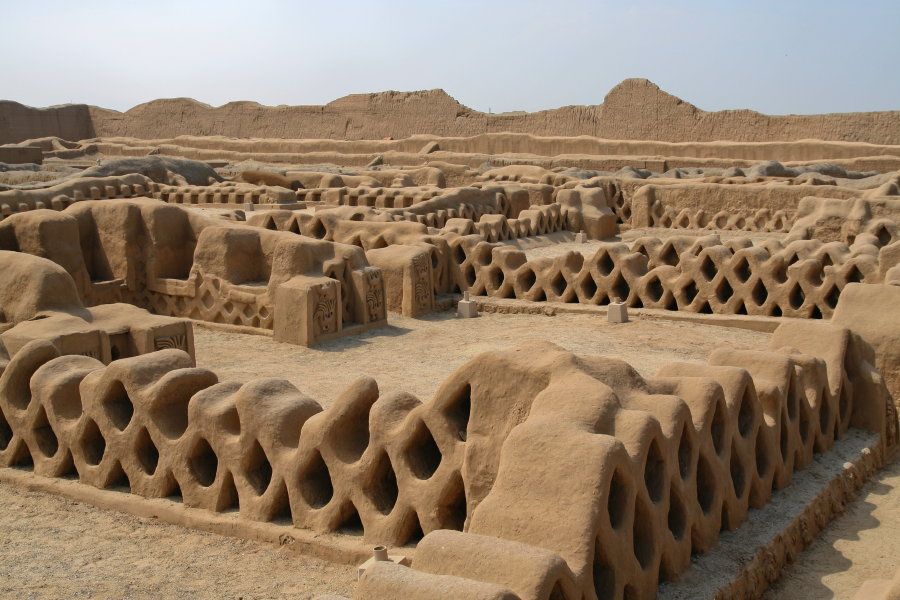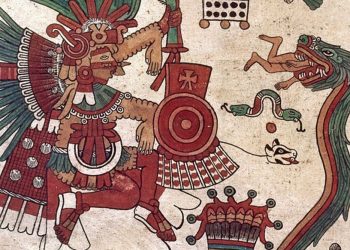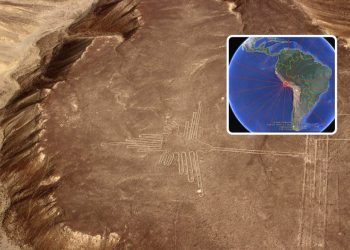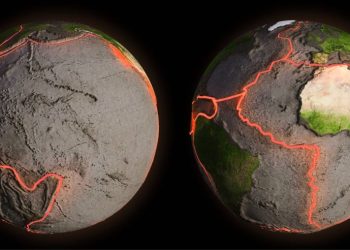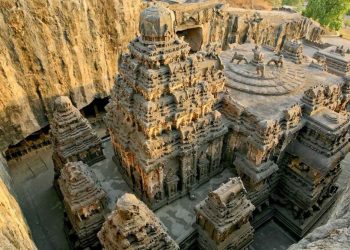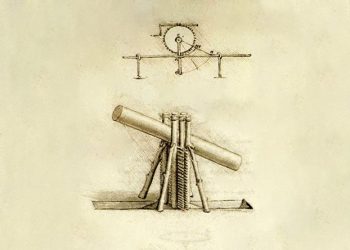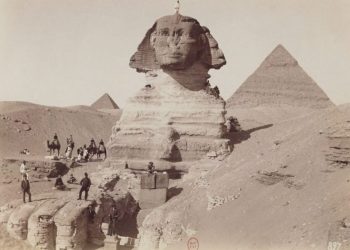Long before the Inca, another empire ruled Peru’s northern coast — a civilization so powerful it built the largest adobe city in the Americas. The now-forgotten empire of Peru was called Chimor, and its capital, Chan Chan, was a vast network of palaces, temples, and walls carved from sun-dried mud. The Chimú left behind no writing, no chronicles, no names of kings. But their city still stands in silence, half-buried in desert wind, challenging archaeologists to tell a story written only in architecture.
Who were the Chimú?
The Chimú civilization emerged around the year 900 CE, in the wake of the Moche collapse. Where the Moche had dominated northern Peru for centuries, the Chimú rose to power by reordering the landscape and absorbing what remained of earlier cultures. From their base in the Moche Valley near modern-day Trujillo, the Chimú expanded their control along more than 1,000 kilometers of Peru’s arid coastline.
They were not just warriors or rulers. They were engineers, metallurgists, builders, and artists. Their ceramics captured realistic forms, their jewelry displayed technical precision, and their city planning showed a deep understanding of space and power. What they could not express in words, they rendered in form.
The Chimú operated in a world without a formal writing system. Still, they managed to coordinate the labor of tens of thousands, maintain vast trade routes, and uphold a deeply hierarchical society. Their silence, in many ways, was a form of communication.

Chan Chan — the capital built from earth and memory
At the heart of the Chimú empire stood Chan Chan, a metropolis of mud brick unlike anything else in the pre-Columbian world. Stretching over 20 square kilometers, it was once home to an estimated 40,000 to 60,000 people. The city was not built all at once, but rather in stages, each generation expanding and modifying the landscape to reflect the growing complexity of the Chimú state.
Chan Chan’s most striking features are its nine rectangular citadels, known as ciudadelas. These were not mere homes, but ceremonial and administrative compounds for successive Chimú rulers. Inside each were burial platforms, storerooms, audience chambers, and courtyards, all carefully arranged to reflect a cosmological and social order.
The walls of these compounds are decorated with bas-reliefs depicting fish, pelicans, and marine motifs, a nod to the Chimú’s dependence on the ocean. Some walls are layered like waves, others patterned with geometric repetitions. The motifs were not ornamental. They were symbolic markers, guiding the elite through a city designed to mirror their place in the world.
Water in the desert — how the Chimú made the impossible work
Northern coastal Peru receives almost no rainfall. Yet the Chimú built a capital of tens of thousands and fed them with a complex system of canals and reservoirs. This hydraulic infrastructure was perhaps their greatest achievement.
Drawing water from the Andean foothills, they channeled rivers through a maze of irrigation canals. Some ran for dozens of kilometers across the barren desert. Others connected entire valleys, redistributing water based on seasonal flow and need. The Chimú not only brought water to arid lands, they used it to control power. Those who held water, held the keys to survival.
Their knowledge of hydraulic engineering allowed them to transform the environment. They grew maize, beans, squash, and cotton. They stored food in preparation for droughts. They adapted their systems to changing conditions,even rerouting entire river flows. Their mastery of water turned the desert into a state.
The empire the Inca couldn’t ignore
When the Inca began expanding from Cusco in the 15th century, they encountered dozens of cultures. Most were absorbed with limited resistance. Chimor was different. It was too large, too organized, and too strategic to be ignored.
Under the leadership of Tupac Inca Yupanqui, the Inca mounted a focused campaign against Chimor around the year 1470. The war did not last long, but its consequences were significant. Rather than destroy Chan Chan, the Inca dismantled its power structures. They relocated the Chimú nobility to Cusco, dispersed their engineers and artisans, and incorporated their knowledge into the growing Inca state.
Chan Chan was left behind. Some areas were abandoned. Others were looted in the centuries that followed. The city that had once controlled the desert slowly returned to it.
No written records, but messages in mud
Unlike the Inca, who used knotted strings called quipu, the Chimú left no known form of writing. There are no surviving codices, no stone inscriptions, no royal decrees. Everything we know comes from what they built, and what remains.
The architecture of Chan Chan offers clues. The city’s orientation reflects solar alignments. Certain compounds appear designed to channel wind or emphasize acoustic effects. Repetitive imagery may reflect clan symbols, social divisions, or cosmological beliefs. Each compound, wall, and motif is a fragment of a language no one remembers how to read.
Even now, archaeologists debate whether certain patterns represent calendars, ranks, or mythological narratives. The absence of text does not mean the absence of meaning. It means we have to listen differently, to mud bricks, to alignments, to silence.
What was lost when memory disappeared?
The Chimú are often overshadowed by the Inca, just as the Inca are overshadowed by the Spanish. Yet their contributions are not erased. They persist in the layout of cities, in irrigation channels still used by farmers today, in the motifs copied by later cultures.
Chan Chan is a relic, but not a ruin. It is a reminder that power can be exercised without words, that empires can rise and fall without leaving a single letter behind. The forgotten empire of Peru is not forgotten because it failed. It is forgotten because its language was made of walls, and those walls are now crumbling.
The Chimú built an empire without books. They ruled through architecture, irrigation, and silence. Today, Chan Chan crumbles beneath sun and wind, but its scale still speaks of ambition and mastery. The story of the forgotten empire of Peru survives not in texts, but in patterns etched into mud, a ghost city still holding onto secrets.



